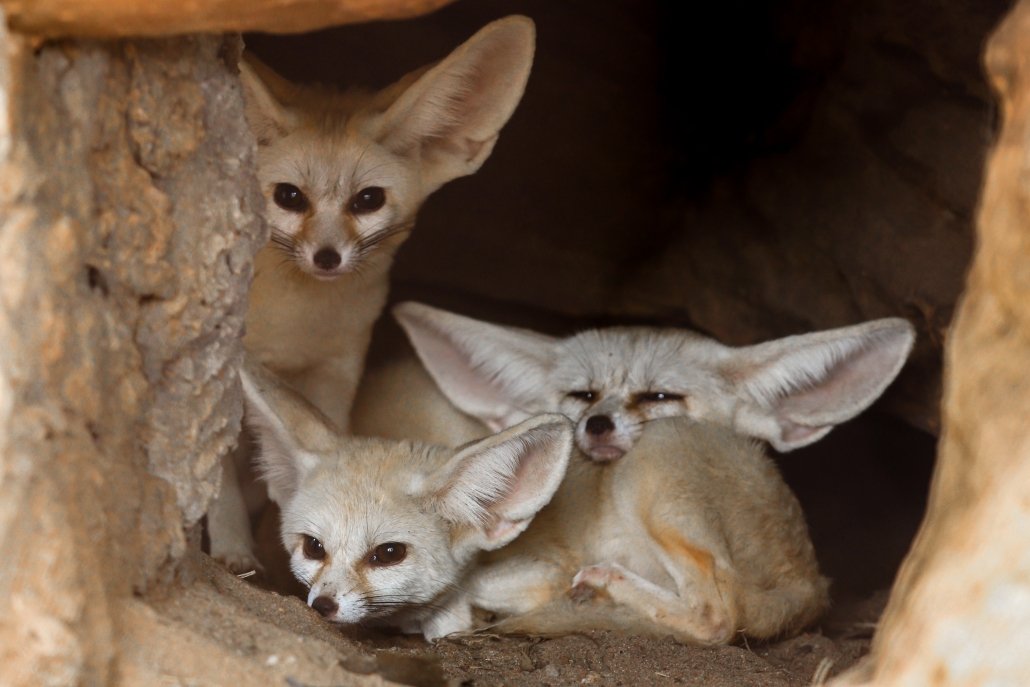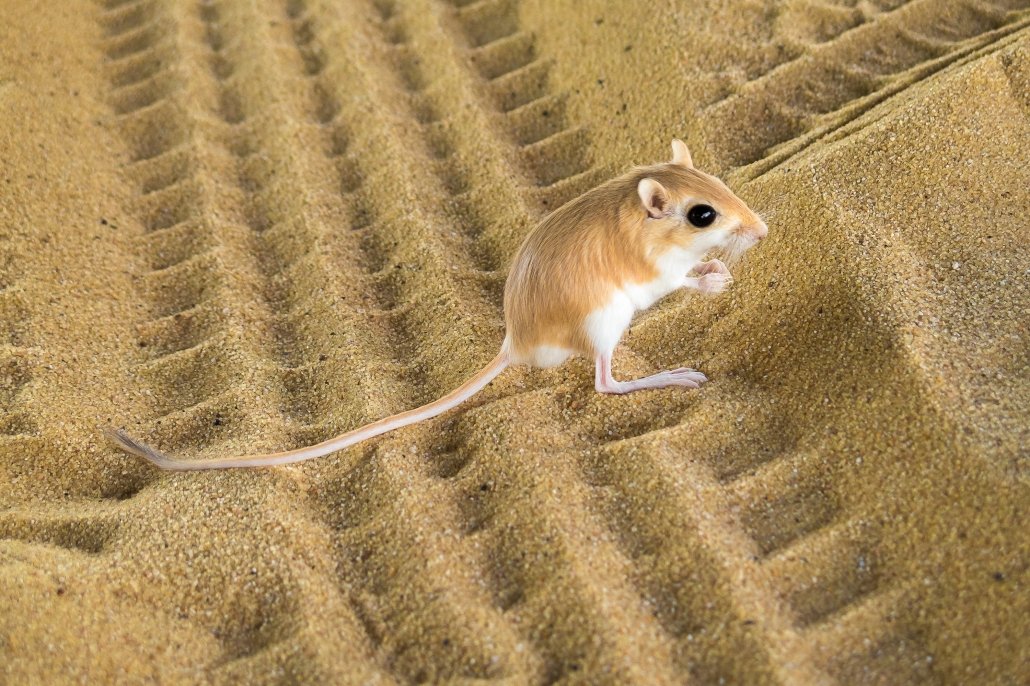How have animals adapted to the desert?
Few animals, besides scorpions and small reptiles, have adapted to survive the hottest desert regions. In areas with a greater water supply, biodiversity increases as vegetation such as shrubs, cacti, and hardy trees form the foundation of a more extensive food web. As deserts are found on most continents, different consumer species have evolved to survive the harsh desert environment.

A family of camels in the Thar Desert
Camels have been domesticated for at least 3500 years and have long been valued as pack animals. They can carry large loads 25 miles a day. Camels have adapted to survive hot deserts because they:

A family of fennec foxes
The fennec fox is the smallest of all fox species. They are found in the Sahara Desert and elsewhere in North Africa. They are nocturnal, which helps them deal with the heat of the desert environment. They have also made some physical adaptations to help as well. For example, they:

A kangaroo rat
A kangaroo rat is a rodent found in desert areas in southwestern North America. Desert kangaroo rats live in areas with loose sand, often dune terrain. Kangaroo rats have made several adaptations to enable them to survive in the desert, including:
Use the images below to explore related GeoTopics.